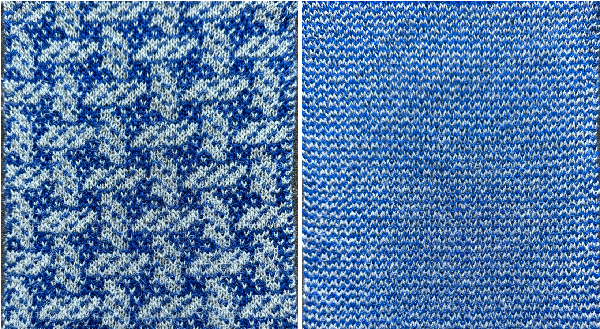It appears hound’s teeth are turning up on runways everywhere, along with plaids. There are many variants of the pattern, and excel and other software programs make playing with motifs, literal and not so much, easy and quick studies. History of the particular platter may be found @ http://www.tess-elation.co.uk/houndstooth/history, analysis of the math involved: https://archive.bridgesmathart.org/2012/bridges2012-299.pdf
the Studio punchcard version 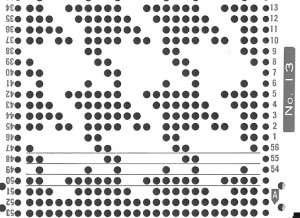 the Brother version
the Brother version 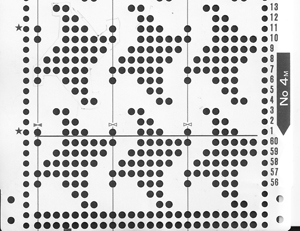 a more block-like one, similar to some found on woven fabrics
a more block-like one, similar to some found on woven fabrics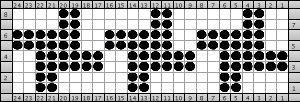 a petite cousin
a petite cousin  playing with the negative space (no longer suitable for punchcard)
playing with the negative space (no longer suitable for punchcard) some repeats lined up
some repeats lined up 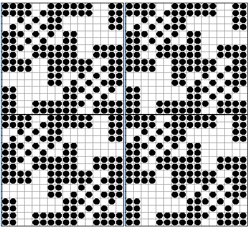
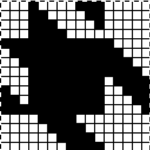
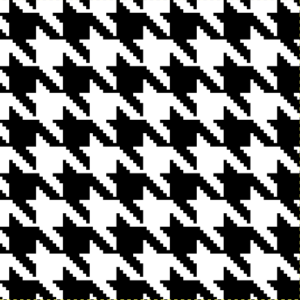 some “doodles” of mine
some “doodles” of mine 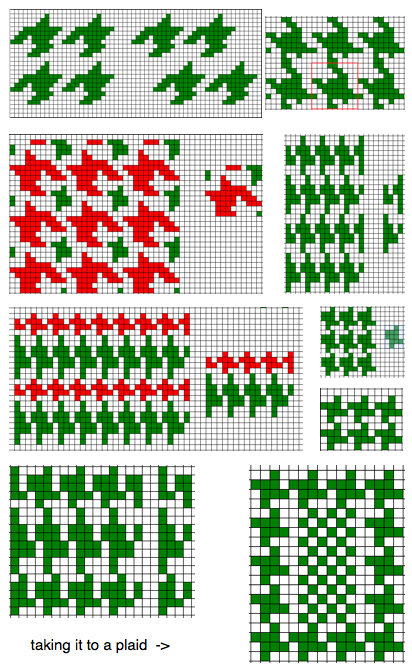 from an online search
from an online search 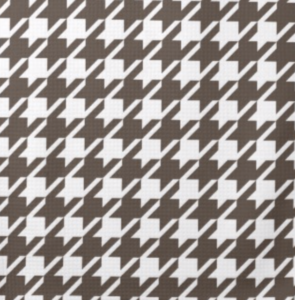
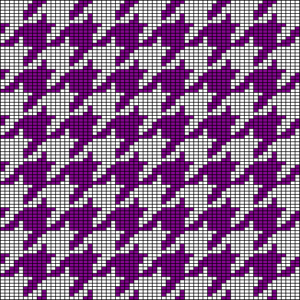 adding simple shapes
adding simple shapes 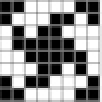
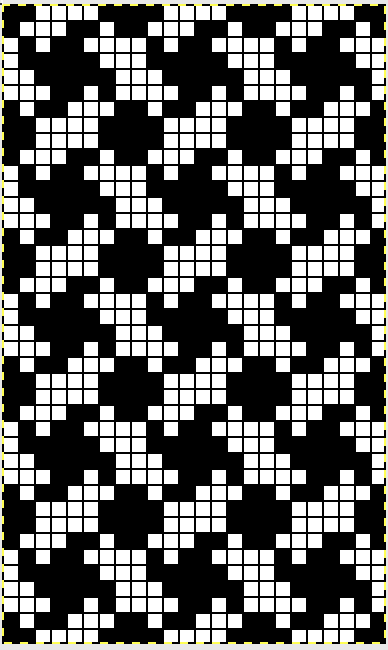 a weaving draft
a weaving draft 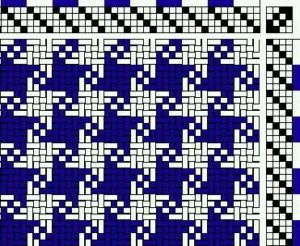 more weaving drafts, scaled for knitting, repeat isolated, and tiled for preview
more weaving drafts, scaled for knitting, repeat isolated, and tiled for preview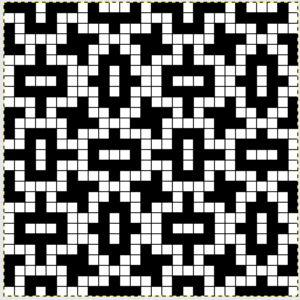
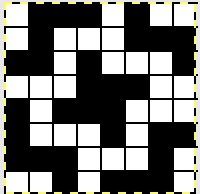
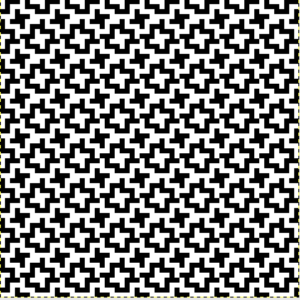
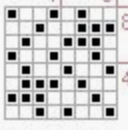
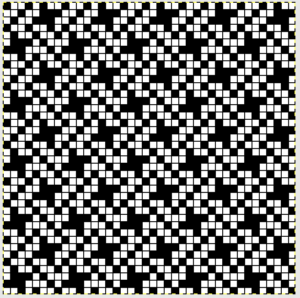
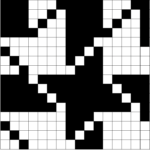
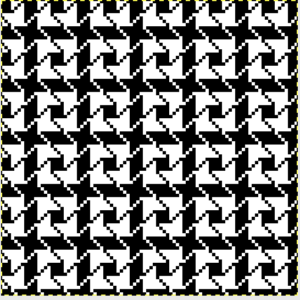
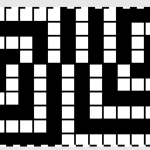
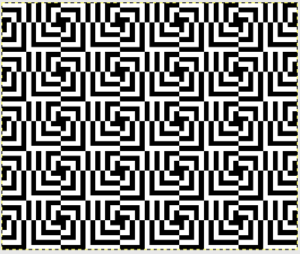 color reversals
color reversals
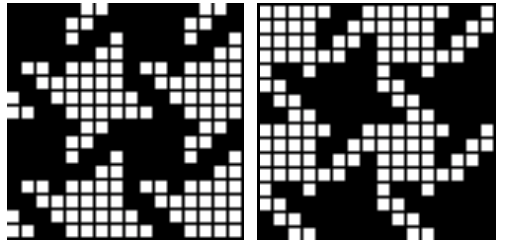
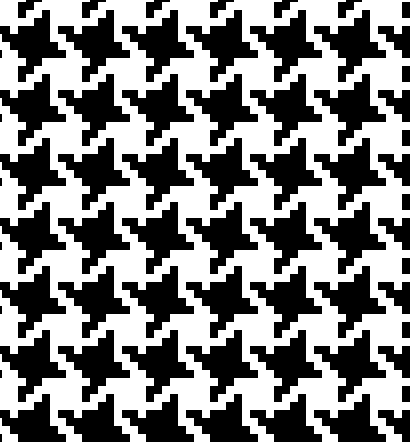
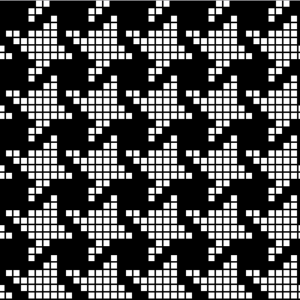

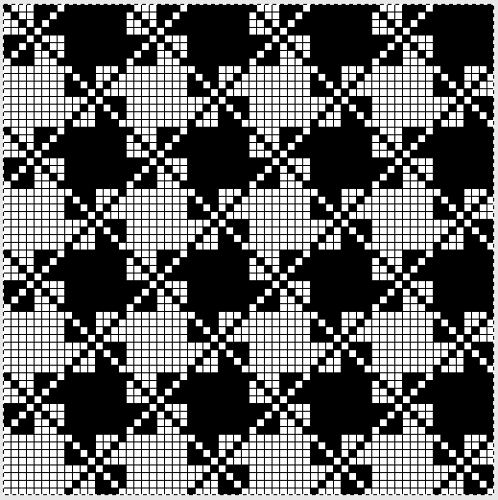
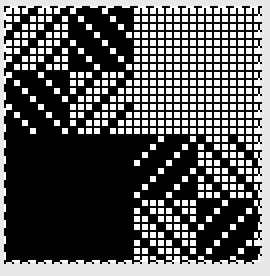
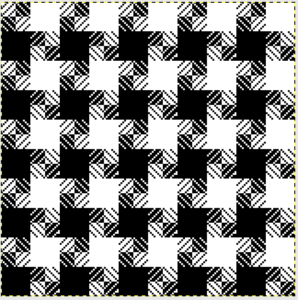
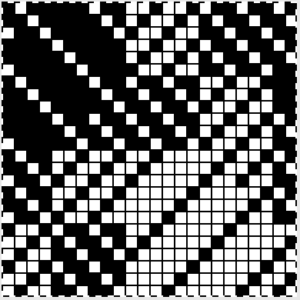
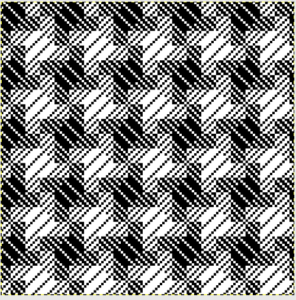

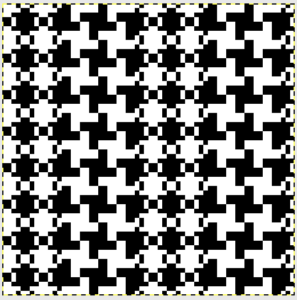
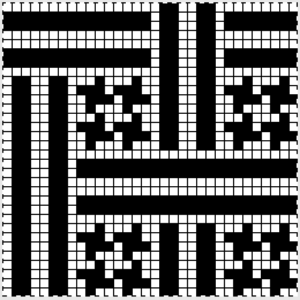
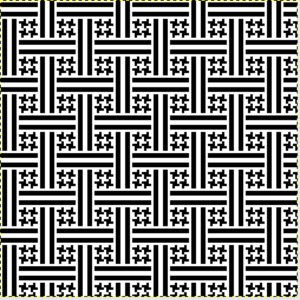
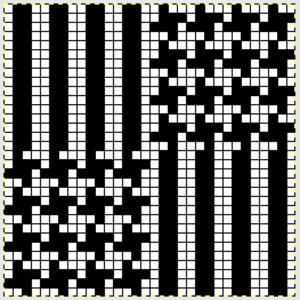
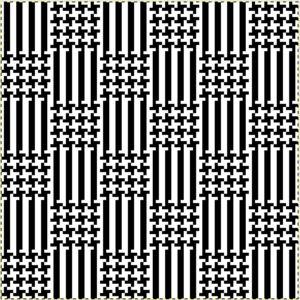 vertical pattern combo with other designs, repeat is 8 rows by 47sts
vertical pattern combo with other designs, repeat is 8 rows by 47sts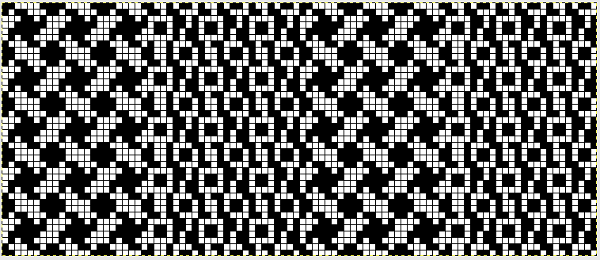 from a punchcard pattern book
from a punchcard pattern book 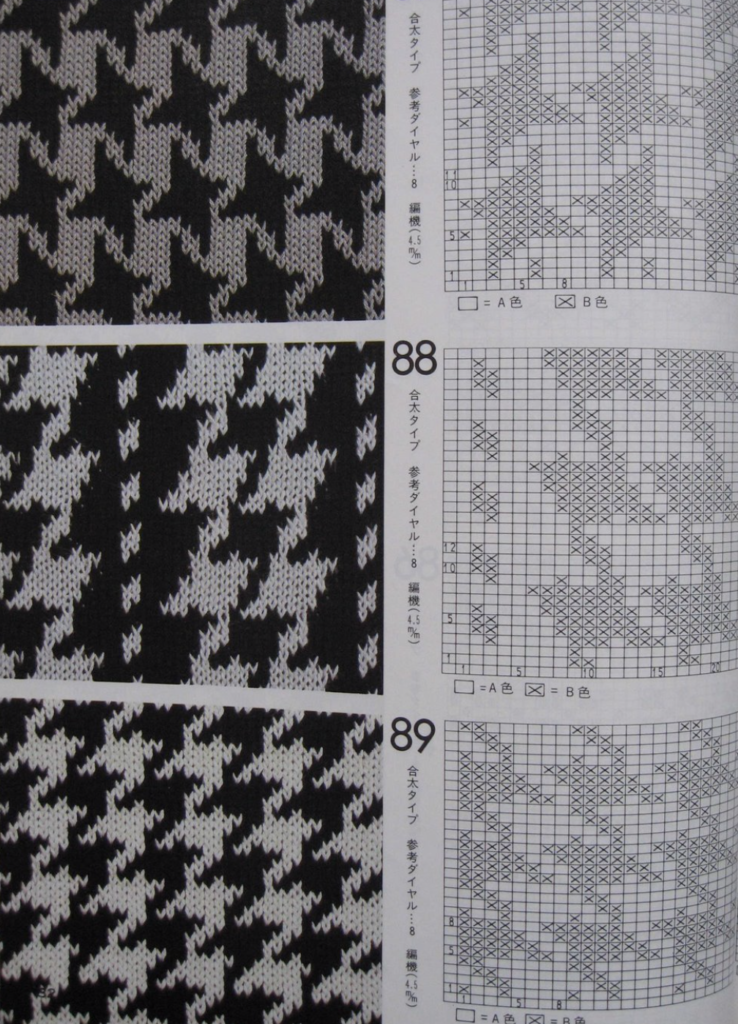
going large,28X28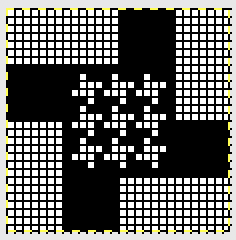
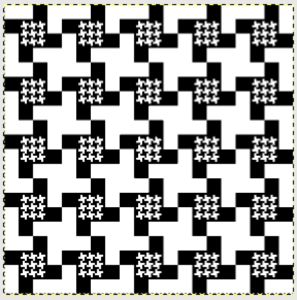 48 X 48
48 X 48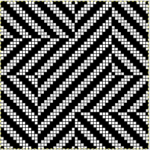
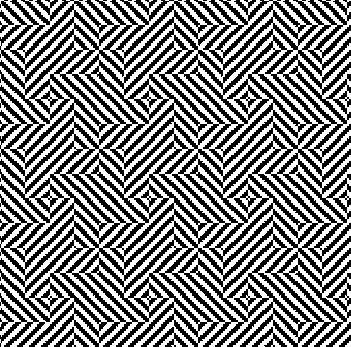 going a little “crazy”, a 134 X134 pixel image, followed by tiling of it
going a little “crazy”, a 134 X134 pixel image, followed by tiling of it 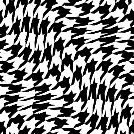
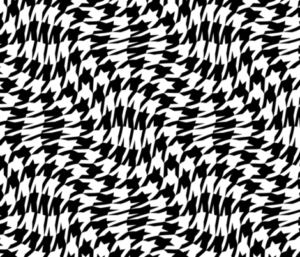 from a 3 color weaving draft inspiration
from a 3 color weaving draft inspiration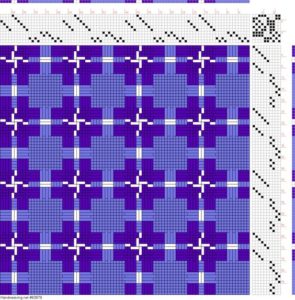
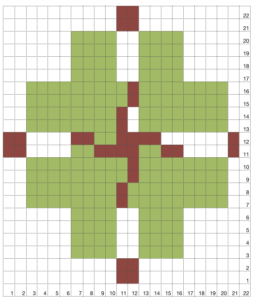
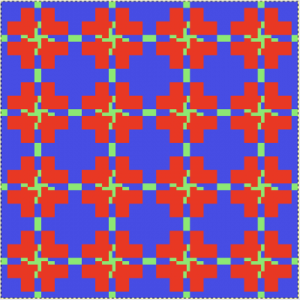
2024 Software tools have changed dramatically since much of the body of this post was first published, some downloadable pngs and added content follows
working larger scale, planning for an added third color, the starting 16X16 png ![]()
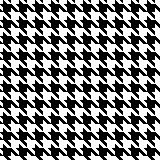 planning a plaid effect requires eliminating touching points, the repeat adjusted to 17X16
planning a plaid effect requires eliminating touching points, the repeat adjusted to 17X16 ![]()
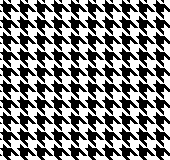 areas adding a third color
areas adding a third color 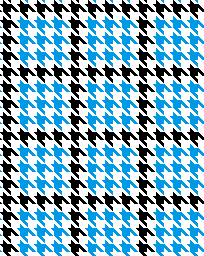 finding the individual 68X64 repeat
finding the individual 68X64 repeat  always check tiling before knitting
always check tiling before knitting
Going huge, planning a repeat on square 8X8 grid blocks 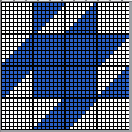 the resulting 32X32 file
the resulting 32X32 file ![]() tiled to 160X160
tiled to 160X160 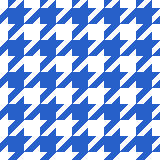 adding another color after removing some pixels, the repeat remains 32X32
adding another color after removing some pixels, the repeat remains 32X32 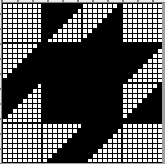
![]()
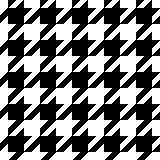 adding a third color in spots, work in only 3 selected colors, not RGB Mode
adding a third color in spots, work in only 3 selected colors, not RGB Mode
this particular variation repeat is 128X128 pixels in size 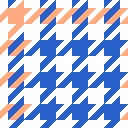 the palette can easily be adjusted to match yarn colors and help to finalize the color choice
the palette can easily be adjusted to match yarn colors and help to finalize the color choice 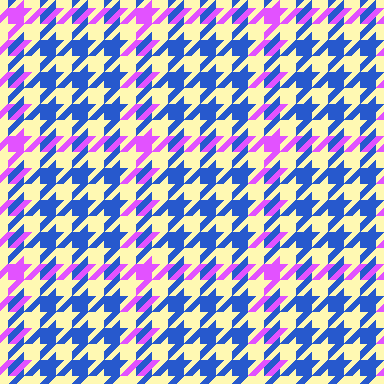 2024: this pattern was also based on a weaving design, and appeared evocative of shapes in this family
2024: this pattern was also based on a weaving design, and appeared evocative of shapes in this family ![]()
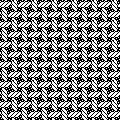 some of the pattern definition may appear less clear in the transition from BW computer renderings to the actual knit sampling
some of the pattern definition may appear less clear in the transition from BW computer renderings to the actual knit sampling 